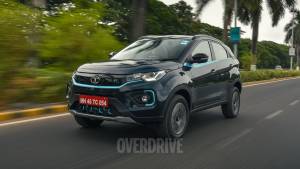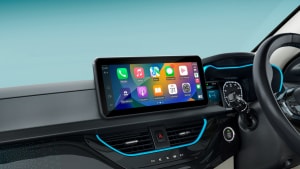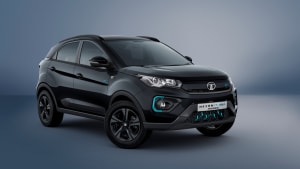Mahindra XUV400 vs Tata Nexon EV Max comparison review - real city, highway range test
The Tata Nexon EV, especially in this long-range Max form, has been your go-to EV if you've wanted something accessibly priced and with enough range and features to make for a convincing family car. It's had the playing field all to itself so far, but now with the Mahindra XUV400 in the mix, it finds itself facing its closest competitor yet. The two are about as closely matched on paper as cars get, so a real-world test is the only way to see what's what. We drove from right in the middle of Mumbai to Lonavala for a jaunt up the hills and back into the city for some peak traffic driving.
Mahindra XUV400 vs Tata Nexon EV Max styling, dimensions
Look at the Mahindra XUV400 and the Tata Nexon EV Max together in traffic or out on the highway, it's the Mahindra that stands out. Much of this concerns the XUV400 effectively being sized for a higher segment. Mahindra has gone back to the original Ssangyong Tivoli bodyshell for this EV, packaging the battery pack under the rear seat and boot, making it 207mm longer, 10mm wider and 18mm taller than the Nexon EV Max.
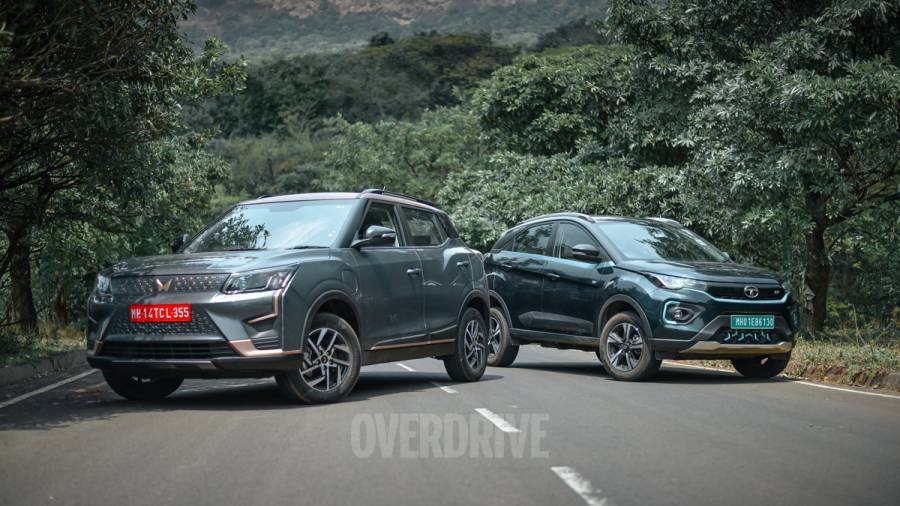
This sense is enhanced by the blockier, more straight-edged styling that the Mahindra employs. The Tata's styling does lend itself a touch more sophistication with its more intricate styling elements, the softer surfaces and the coupe-ish roofline but in terms of the sheer presence you want from an SUV, it is the Mahindra that does it better.
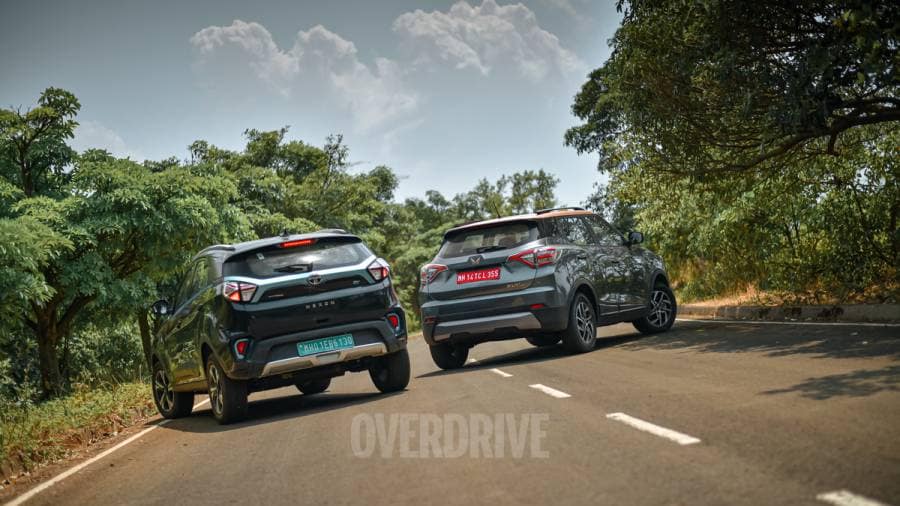
Both will not leave anyone in doubt about your eco-credentials if that is a consideration for you. The blue highlighting and numerous EV badges on the Nexon EV Max see to this, as does the mildly different blanked-out fascia. But again, the Mahindra is a touch more vocal about this with its copper highlights and X-patterns in the more prominently blanked-out grille. You miss the vertical LED signatures for a more sedate one but the Mahindra does differentiate itself a touch more from its ICE counterpart. Notably, Mahindra has reworked the charge port into the front-left fender while the Tata still uses the ICE's fuel-filler space to fit its charging socket. This does make the Mahindra easier to drive up to chargers. Conversely, you miss out on foglamps with the Mahindra.
Mahindra XUV400 vs Tata Nexon EV Max interiors, space, features, boot
Having spent long hours in the cabin of both cars on this trip, it's clear that from the inside these EVs are quite divergent in the way they are to spend time in. The Nexon EV Max is the more visually appealing space when you first step inside, although neither of the SUVs cabins is the most modern by any stretch considering these cars have been around in their ICE forms for some time now.
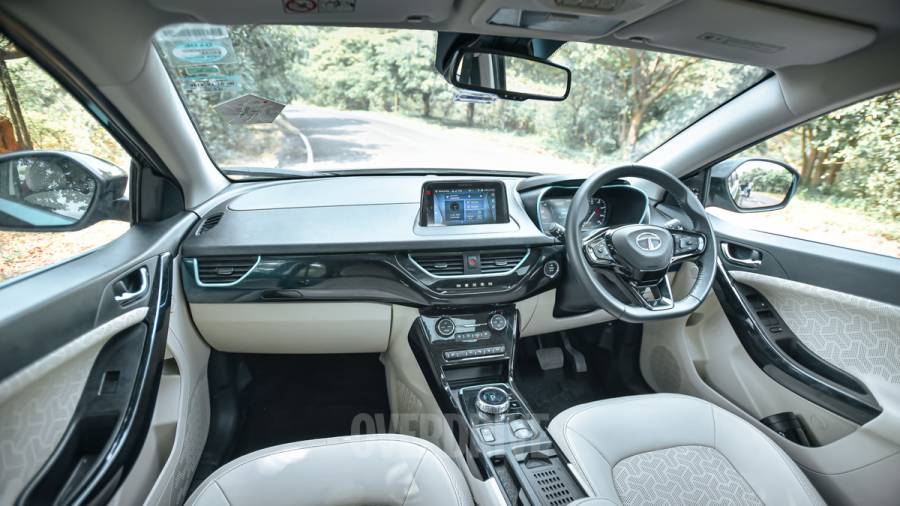
But the Nexon EV Max does spruce this space up with a thoughtful play of materials and textures. The layered dash with its differentiated plastic textures is a nice touch as is the discreet blue-tri arrow motif in the gloss black panelling. The beige with the blue contrasting does well to create a good sense of space in the smaller Nexon while the soft materials on the doors and armrest, and the crisp graphics for the rotary dials add to a sense of plushness.
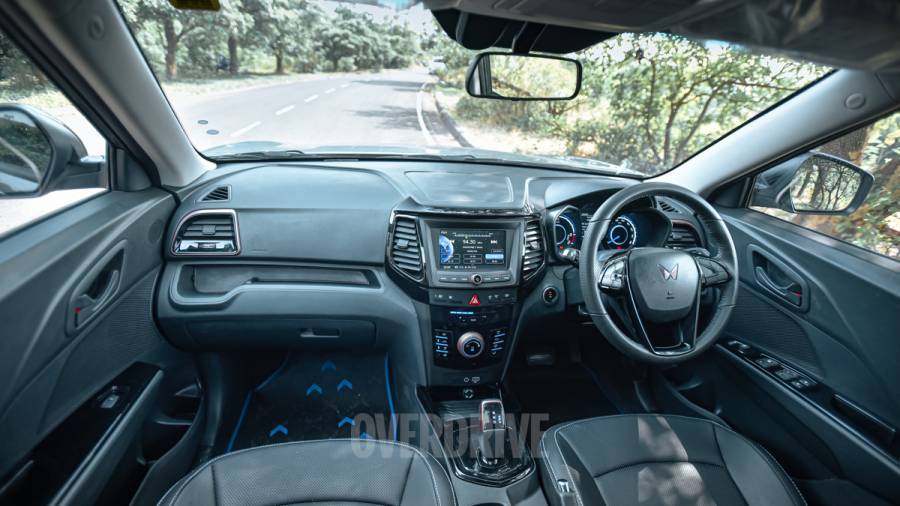
The Mahindra goes with an all-black look to it to differentiate from the XUV300, peppered with copper highlights from the outside. It's a much simpler look than the one in the Nexon and without the many textures to break up the monotony. Although you do get gloss black panels in the centre stack. There aren't as many soft surfaces either but it must be said that the Mahindra does show more consistency in fit and finish, especially in terms of panel gaps and switchgear heft. The Nexon's general layout does look more pleasing, the bank of switches and the screen fixed in the dash in the XUV400 were never the most contemporary.
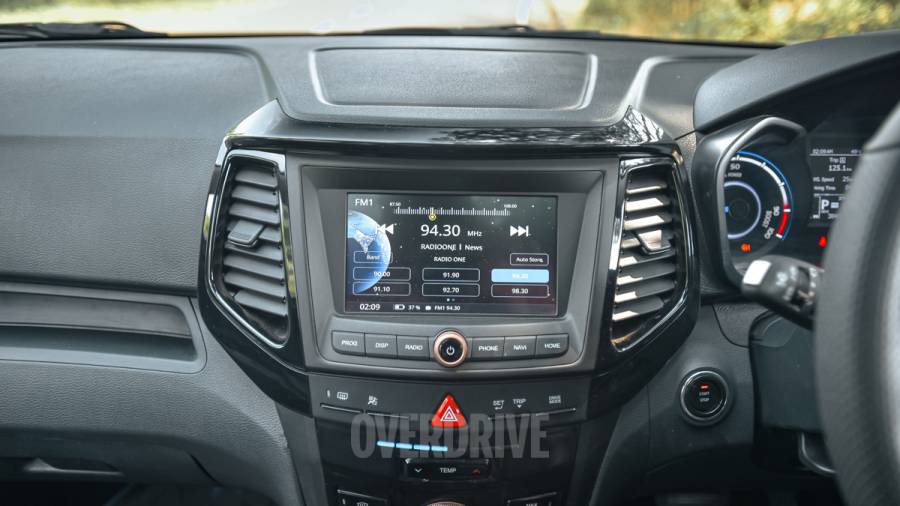
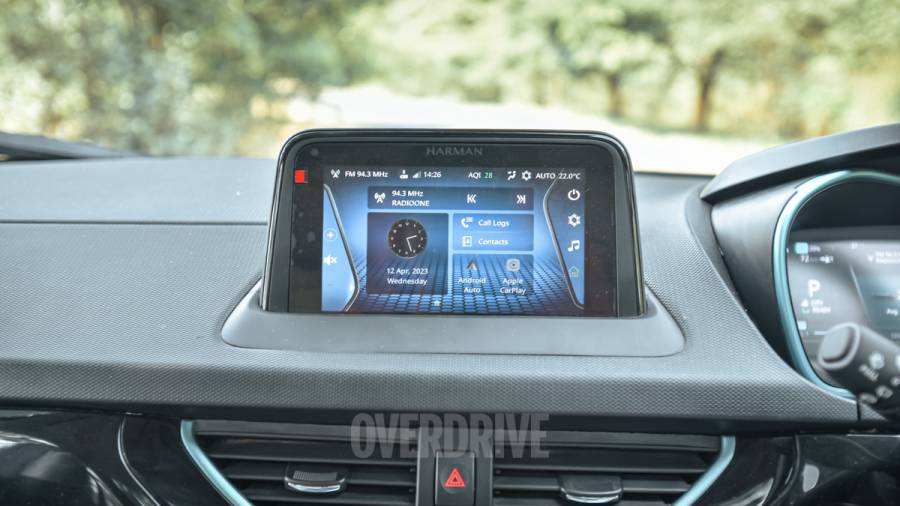
Speaking of screens, you get a 7-inch touchscreen in both. Again, neither is the best that you can get in a car. The one in the Nexon packs more features but the XUV400's is easier to use with simpler menus and hard buttons for the volume and other major controls.
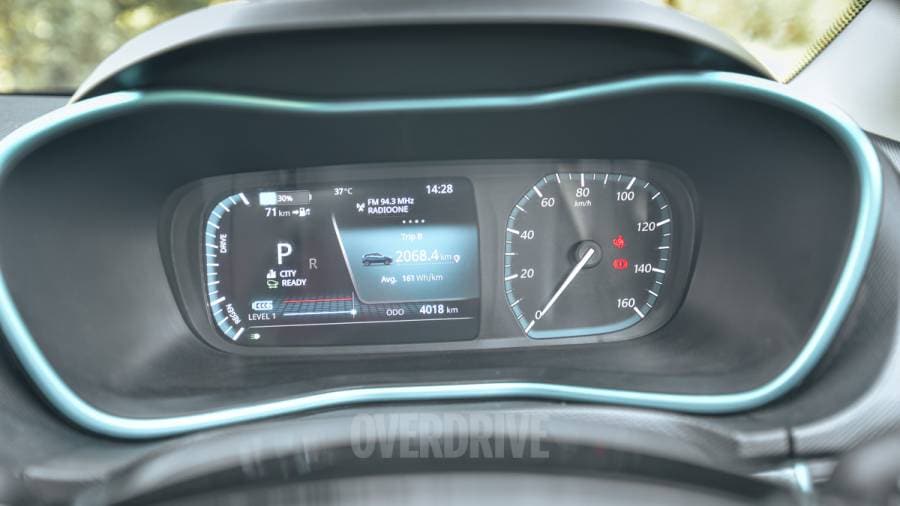
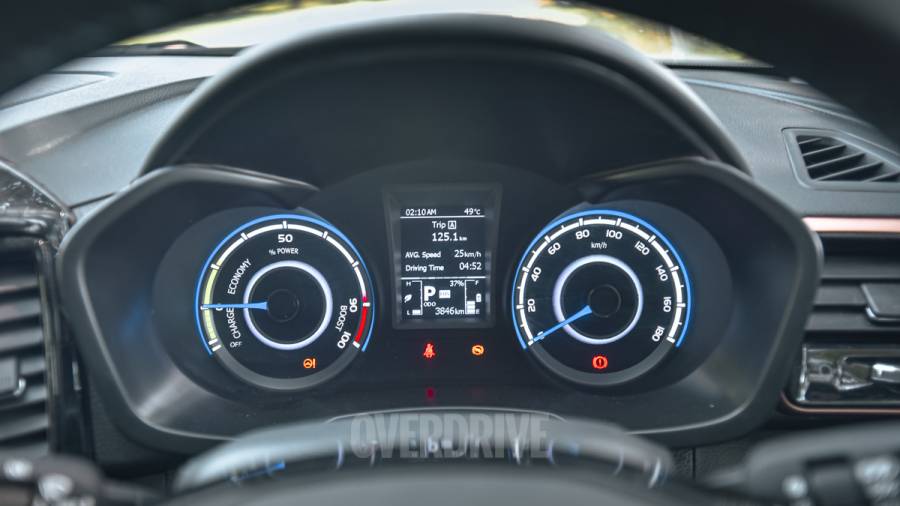
The Tata has a far more useful instrument cluster. This screen offers up an extended trip computer and graphs for power and regen use. It has its flaws in terms of some small regen readouts and tell-tale lights but is more legible than the small MID you get in the XUV400. The information is cluttered together making it difficult to read and all of it isn't presented succinctly as in the Tata. A stark miss is that of an efficiency graph. The range readout also happens to be more dynamic and reliable in the Tata, changing with every drive mode and regen level combination.
Despite the dark cabin, it's clear that the Mahindra's biggest advantage over the Tata is in the sheer space and practicality it offers. The front seats in the Nexon EV Max have better padding but the ones in the XUV400 are wider and almost as supportive, so wider adults will be better served. The footwells in the Mahindra are larger too making for a much greater sense of space.

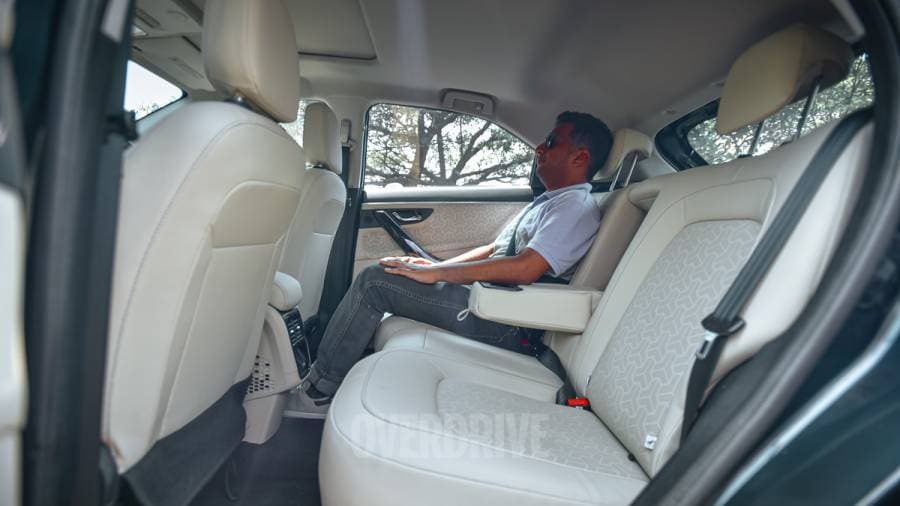
With the XUV400's 102 mm wheelbase advantage, there's much more knee and legroom in the back seat. Both have backrests at a slightly slanted angle which some might not like but the Mahindra offers better thigh support. The battery pack is placed under the seat and boot so the floor isn't too high unlike the Nexon EV Max. The longer squabs in the Tata counter this to an extent. This eats into space for the third passenger though, already constricted by the narrower bench and slight central hump. So on a longer road trip, the XUV400 is more comfortable

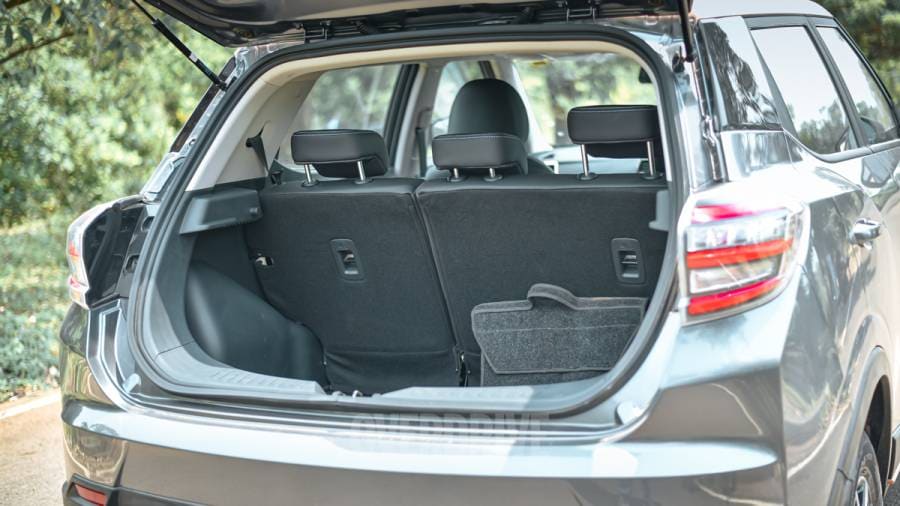
The XUV400 also does better in terms of cabin storage. There are cup holders in the centre console, a big miss in the Nexon EV Max while you also get much larger door pockets. The advantage starts shifting to the Tata in the rear, the Nexon EV max gives you rear vents and a 12V power outlet although both could have done with more USB ports across the cabin. In terms of boot space, the XUV400's is slightly larger on paper at 378 litres versus the Nexon EV Max's 350 but this comes at the cost of the spare wheel. Also, the Nexon may not have such a wide loading area but the loading lip is far lower.
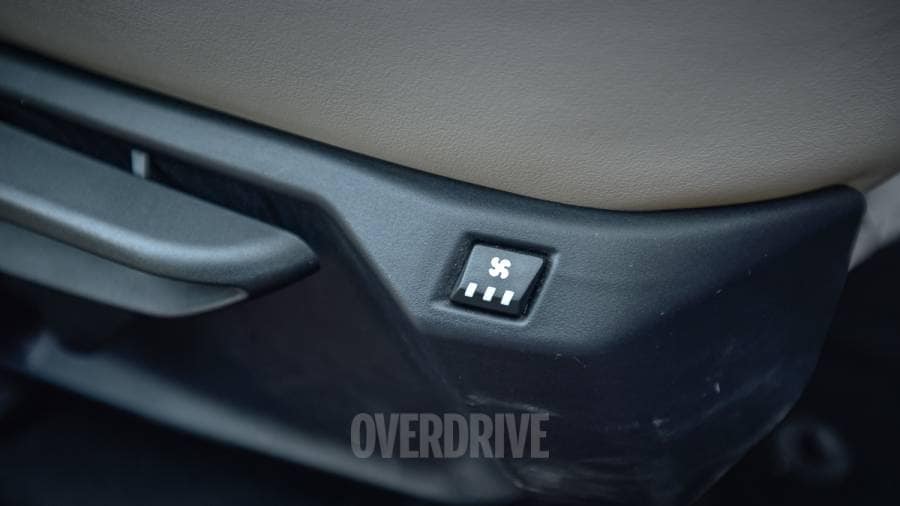
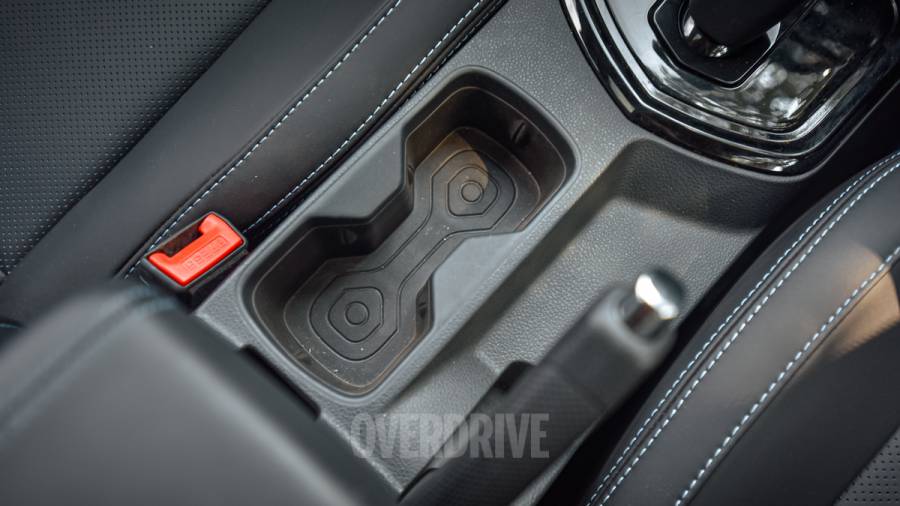
The Nexon EV Max will keep you more occupied on long stints behind the wheel with its gizmos. Both get a single-pane sunroof, auto headlamps and wipers, seat height adjustment as well as connected tech. The Nexon EV Max goes further than this with a more effective auto AC, cruise control, wireless charger and the ever-important ventilated front seats. So effectively, larger families might find the XUV400 more appealing but you can trade some of the space for the better features and ambience of the Tata Nexon EV if you aren't always carrying around a full load of passengers.
Mahindra XUV400 vs Tata Nexon EV Max safety
The Tata Nexon EV Max and Mahindra XUV400 again take different approaches with safety. The XUV400 will give you six airbags in this top trim while the Nexon EV Max only makes do with two. That said, the XUV400 is missing some critical active safety equipment, especially in the context of EVs. These are ESC, hill hold and hill-descent control. We found the XUV400 can roll back on a slope and with the high torque output also wheelspin and torque-steer for you to contend with on hard acceleration in the more potent modes.
Mahindra XUV400 vs Tata Nexon EV Max highway driving impressions
With the idea being to replicate the way these EVs will be used by a prospective owner, we decided to drive up to Lonavala from Mumbai to see how they fare on a common weekend trip. With these being the bigger battery versions, such getaways are well within range, so a round trip on a single charge is reasonably achievable.
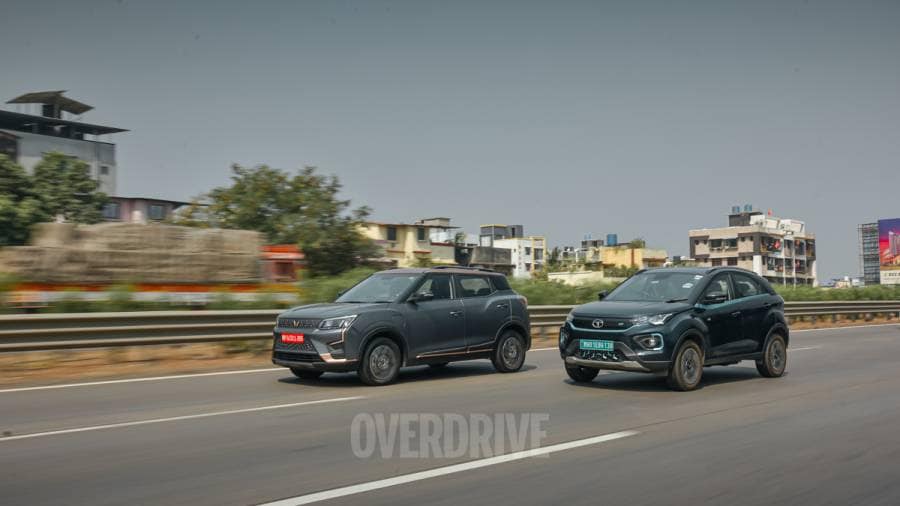
The Mahindra XUV400 makes 150PS and 310 Nm while the Tata Nexon EV Max puts out 143PS and 250 Nm. But for this test, we decided to leave the Nexon EV Max in its City drive mode with the XUV400 in its Fun setting. Both EVs seem quite similar in performance in these modes, the Tata making a reduced 98PS/170 Nm and the Mahindra limiting top-speed to 95 kmph.
The Tata deploys its performance in a more polished way, both limit torque at low throttle application but the ramp-up is more linear in the Nexon EV Max. It's also able to switch to regen more naturally off-throttle, the Mahindra's more abrupt shift can take some getting used to. A notable difference is that the Tata Nexon EV Max gets regen modes, which we left in the first level for the highway stint, while the XUV400 has these tied in with the modes so there's less in the way of fine-tuning your driving experience.
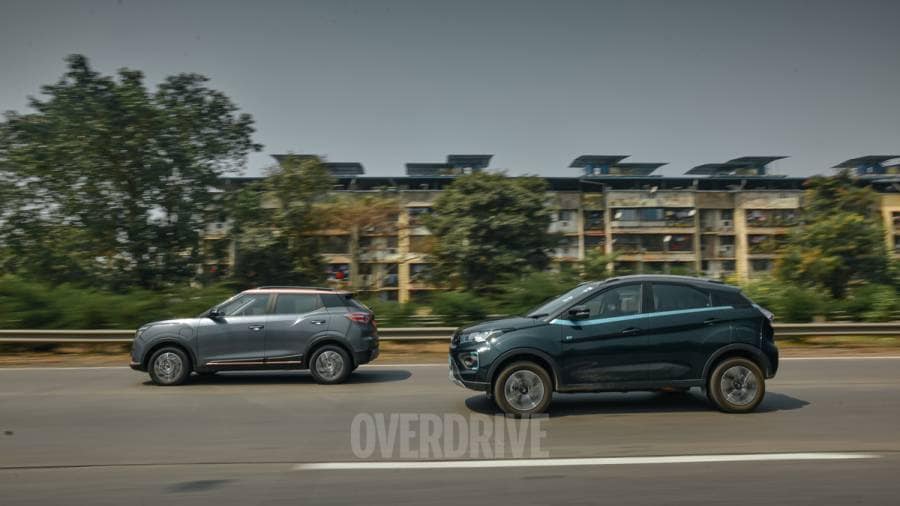
The Tata Nexon EV Max's slightly firmer suspension tune and wider tyres give you a better sense of control on roads like the Mumbai-Pune expressway with their uneven surfaces. The awkward steering placement is a hindrance, so finding a comfortable seating position isn't easy. But once settled in, you feel more in control than in the XUV400. Much of this is down to the more fluid steering feel. It has more heft to it but also feels more linear to use than the Mahindra's. The suspension settles into a nice rhythm and keeps up this sense of solidity with only the roughest grated surfaces coming through.
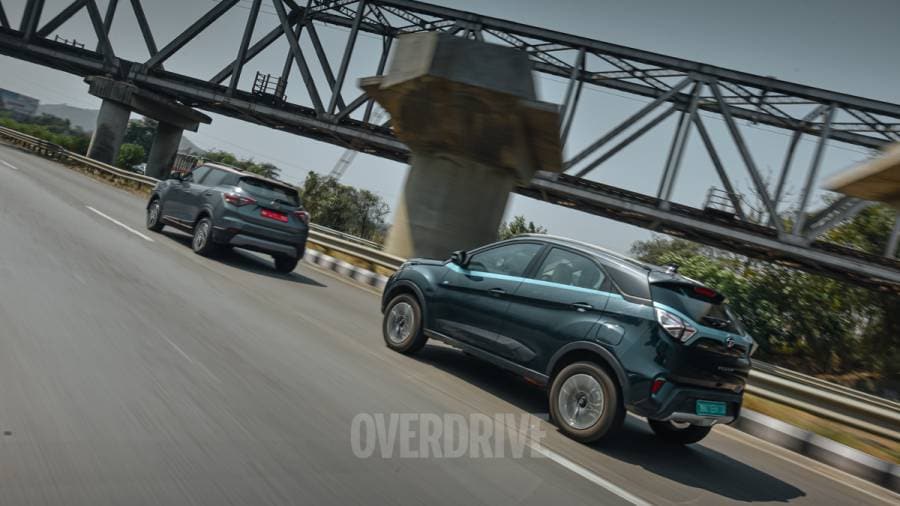
The heavily assisted steering in the XUV400 needs less effort but you also have to make regular, small corrections to keep it true. This can get tiring for the driver but passengers will like the XUV400 more. The frequency-dependent damping tech that Mahindra uses seems to give it quite impressive ride quality. There's little of that inherent firmness that EVs suffer from and the XUV400 absorbs dips and crests more comfortably than the Nexon EV. It's got an added degree of plushness which rounds off rough bumps better than the Tata even if it doesn't have the more poised feel. It's also a tad less adept at keeping wind noise out at speed than the Nexon EV Max.
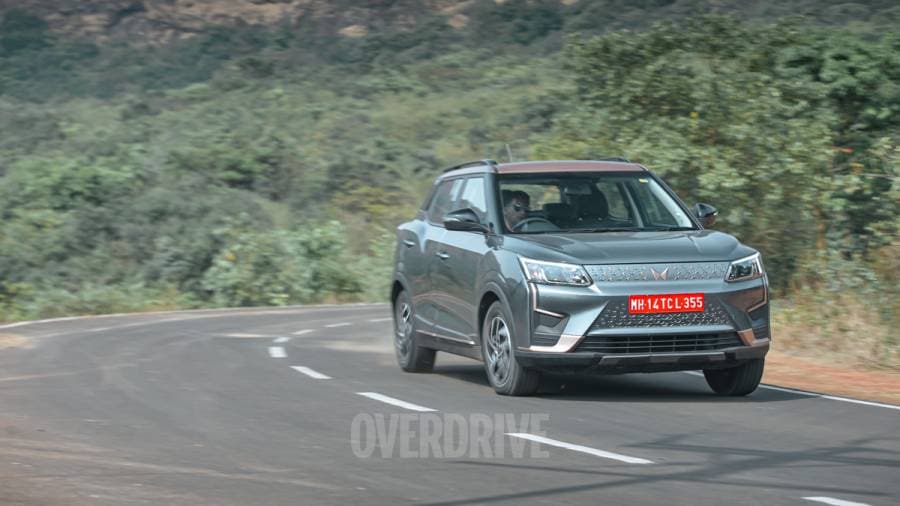

In our regular driving haunts around Lonavala, the Nexon EV Max's tauter dynamics impressed again. The more consistent power delivery, the more natural steering and lesser body roll than the XUV400 make it about as exciting as you might want your family SUV to be. The XUV400's straight-line performance is blistering as our rolling and standing acceleration times suggest but its more comfort-focused suspension shows limitations here.
Mahindra XUV400 vs Tata Nexon EV Max city driving impressions
But far more pertinent is how they feel out a regular weekday commute, and there's none more dreaded than a drive from the suburbs to south Mumbai's business district. The XUV400's driving position is more useful here. You have a wider, more upright windscreen and the edges of the bonnet are better seen than in the Tata Nexon EV Max. So manoeuvring in tight traffic is simpler. The Nexon EV Max's more sloping A-pillar also causes a larger blind spot.
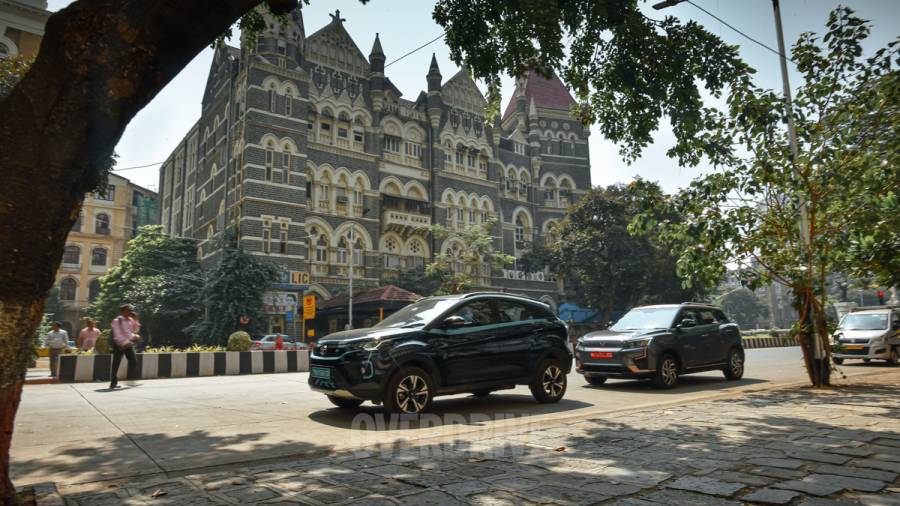
Here you also realize that the Mahindra's suspension and steering tune hold it in better stead. The XUV400 takes less effort to drive here, especially with the quite hefty feel from the Nexon EV Max's steering at slow speeds. The Nexon EV Max also can't quite handle the rough, patchworked surfaces that you encounter so often in our cities. It handles these quite noisily and you feel some of it in the cabin. The XUV400 doesn't quite glide through these patches but it's more pliant and rounds them off to a much greater degree. Surprisingly, there's less pitch and dive at these low speeds in the Mahindra than in the Tata.
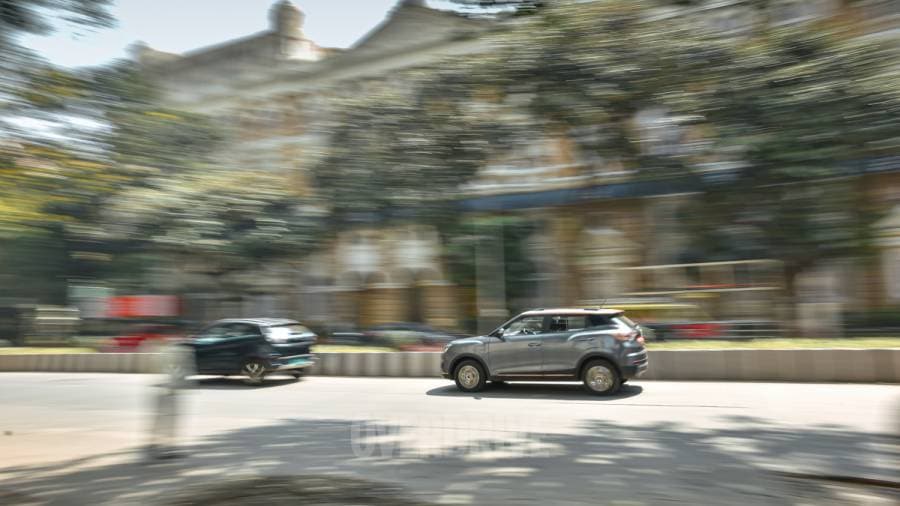
But the Tata again claws back ground with its more refined drivetrain. It's much easier to modulate speed in traffic despite there not being a one-pedal driving mode as in the Mahindra. The Nexon EV Max has a more natural feeling brake pedal which makes stopping more confident, the Mahindra's abrupt switch from drive to regen again hampers it here. Both, however, could do with better-executed drive selectors. The Tata's jewelled knob is better than earlier but still takes some getting used to. Similarly for the XUV400, you need a firm dab of the pedal for it to switch modes which is again not ideal while making three-point turns. Further, the lack of hill-hold can again catch you off guard on slopes.
Mahindra XUV400 vs Tata Nexon EV Max battery, efficiency, range
The Tata Nexon EV Max and the Mahindra XUV400 are similarly specced in terms of battery sizes. The Tata has a 40.5 kWh pack and the XUV400 a 39.4 kWh pack. However, they differ in terms of battery chemistry. Mahindra has gone the Nickel Manganese Cobalt(NMC) way while Tata uses Lithium Iron Phosphate(LFP) cells, both variations of lithium-ion battery tech. NMC batteries are known for their higher energy density while LFP batteries tend to be more thermally stable and last longer, although both are currently equally preferred across the industry. In our experience though, the Mahindra XUV400 seemed to get noticeably hotter than the Tata while charging and under heavy use, it also seemed to lose charge parked overnight quicker than the Tata.
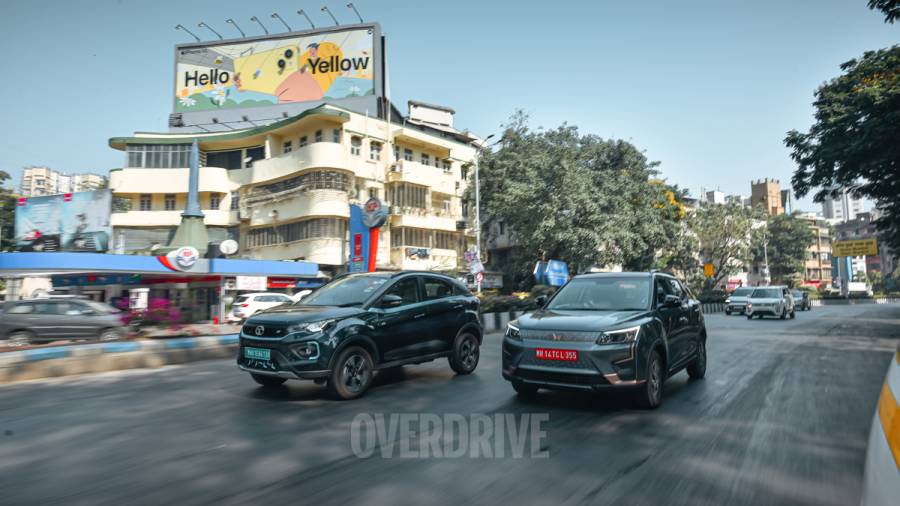
The Tata was also more efficient across the wide range of real-world conditions we put these EVs through. This is again down to the better-tuned drivetrain as much as it is to the battery. The Mahindra's single-pedal mode does add a notable amount of energy back but it must be noted that we could have driven the Tata more efficiently still. You have an Eco drive mode as well one for the climate control. Or we could have chosen higher regen levels.

The Tata Nexon EV Max, after a recent software update, now has an ARAI-certified range of 453 km, against the XUV400's 456 km. But the real-world range figures tell a different story. It must be noted though that we recouped quite a bit of energy on our downhill run back and drove hard for our shoots which has gotten the highway and city efficiency numbers close to each other. It also shows that you can really use these EVs for weekend trips or as a daily commuter without charging more than a couple of times a week.

In this sense too, the two are closely matched. Both fast charge at upto 50 kW, the XUV400 does it slightly quicker on paper getting up to 80 per cent in 56 minutes while the Nexon EV max takes 50 minutes. But, charging the two EVs at different fast chargers and on slow AC charging, we found these numbers not to make much real-world difference. Both can AC charge at up to 7.2 kW with both taking 6.5 hours. The Nexon is 2 hours slower with the 3.3 kW charger though.
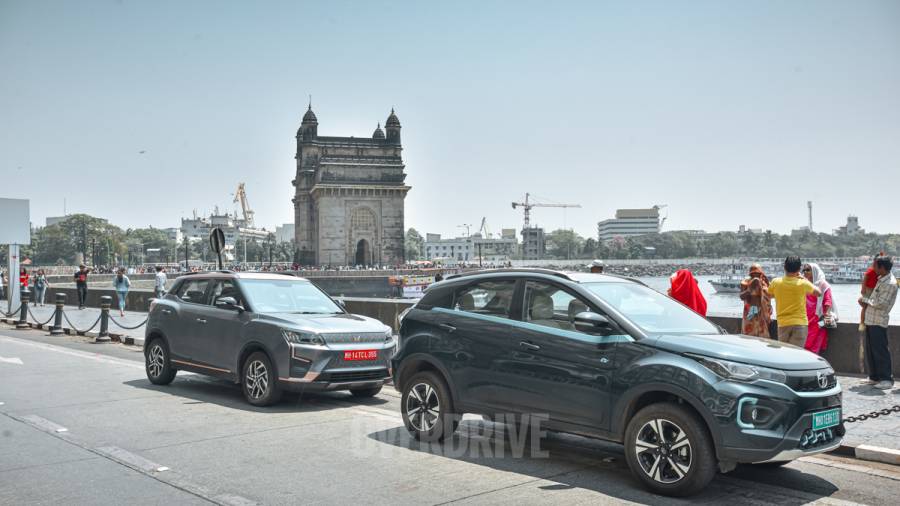
Mahindra XUV400 vs Tata Nexon EV Max price, verdict
The Mahindra XUV400 is a strong first effort, It's bigger, both inside and out than the Tata Nexon EV Max, has blistering performance and is reasonably efficient in isolation. The Tata Nexon EV Max though shows what a headstart can do for you in a new segment, and with new technology. It feels like a more complete package with its better efficiency, better-integrated drivetrain and more tweakable modes. You also have more choices in terms of variants and features which adds to it being more approachable. Prices for the Tata Nexon EV Max start from Rs 17.57 lakh while the Mahindra XUV400 is available in a single long-range version that costs Rs 20 lakh. The comparable Nexon EV Max costs Rs 20.19 lakh.
- --
EV charging infrastructure in India
Driving these EVs aside, we also came up against the current state of charging infrastructure in India. When DC fast chargers work, they're not much of a hassle. You drive up, plug the cable in and top up via your phone app. The 50 kW speeds these cars could take also never made the wait interminably long.
But when they don't, which as luck would have it happened more often than not over the course of this story, you can be in for some trouble. The Chargegrid and Instacharge chargers in Lonavala would plug in but not deliver power. The Chargegrid backend was more alert and found a fix to get the Nexon charged but couldn't fix the same issue with the XUV400. The Instacharge service team wasn't as prompt only responding hours later, although they were prompt to refund money.
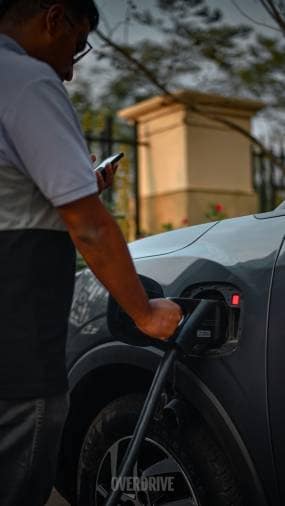
Later on, prepping for the city run, we drove up to a new Tata Power charger in Bandra which was available on the app but again wouldn't deliver power. The backend team guided us through the reset process which didn't fix it, and a promised call from the tech team never came.
This experience is a fairly true marker of the current state of EV charging infrastructure. It's growing rapidly but the inherent technical and logistical challenges that come with maintaining a complex new form of infrastructure is probably not being given enough attention. We also think there could be better accountability at locations housing these chargers, although that has grown in the last couple of years of us doing such stories. So AC home charging is your fail-safe as long as you aren't on a road trip. We eventually did resort to this and overnight charging did fit into our schedule quite cleanly.
Mahindra XUV400 vs Tata Nexon EV Max scorecard
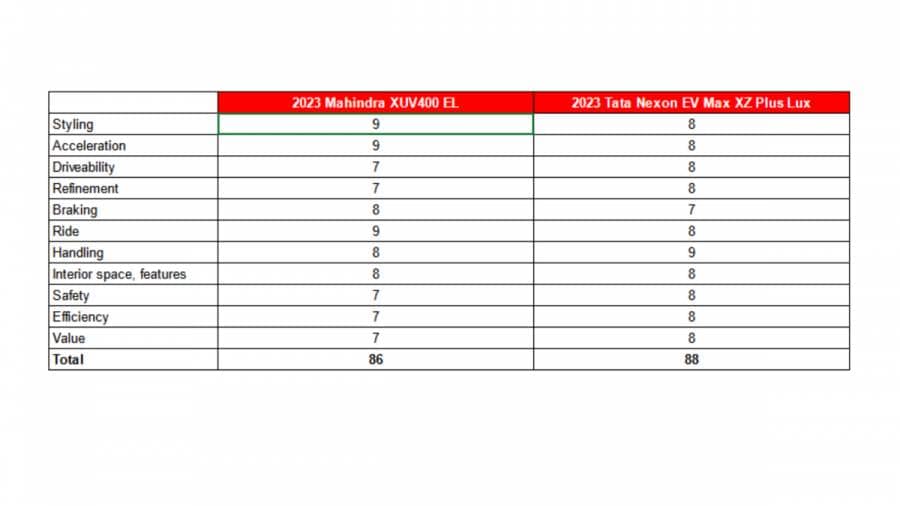
Mahindra XUV400 vs Tata Nexon EV Max real-world performance, range, specifications
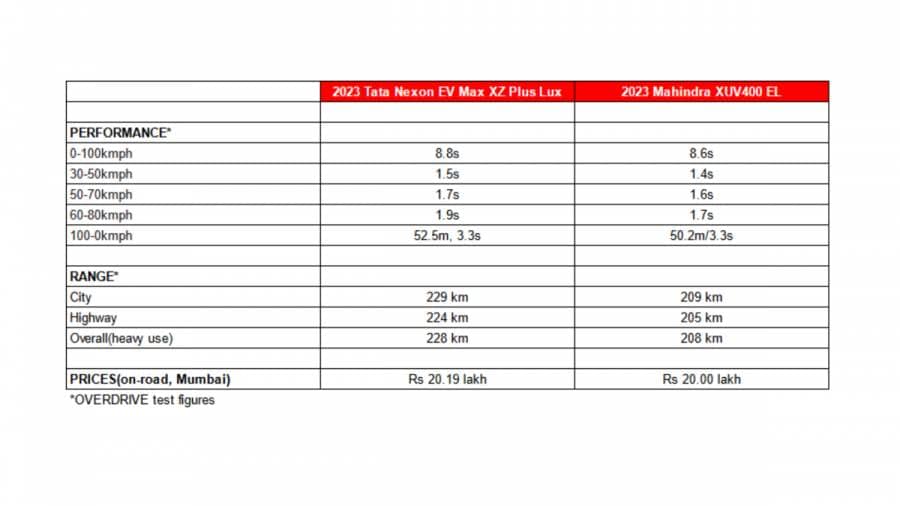
Also read,
2023 Mahindra XUV400 EV review, first drive is there reason to be excited?
MG ZS EV vs Tata Nexon EV Max comparison review the new order
2022 Tata Nexon EV Max review, road test real-world range tested!
Starts Rs 13.99 Lakhs
-NA-
Automatic
129
245
-NA-
Starts Rs 6.95 Lakhs
1497cc
Automatic
110
260
21.5 Kmpl
Starts Rs 17.74 Lakhs
-NA-
Automatic
143
250
437 Kmpl
Starts Rs 7.95 Lakhs
1197cc
Manual
110.1
200
-NA-
Starts Rs 22 Lakhs
-NA-
Automatic
176.75
280
-NA-
